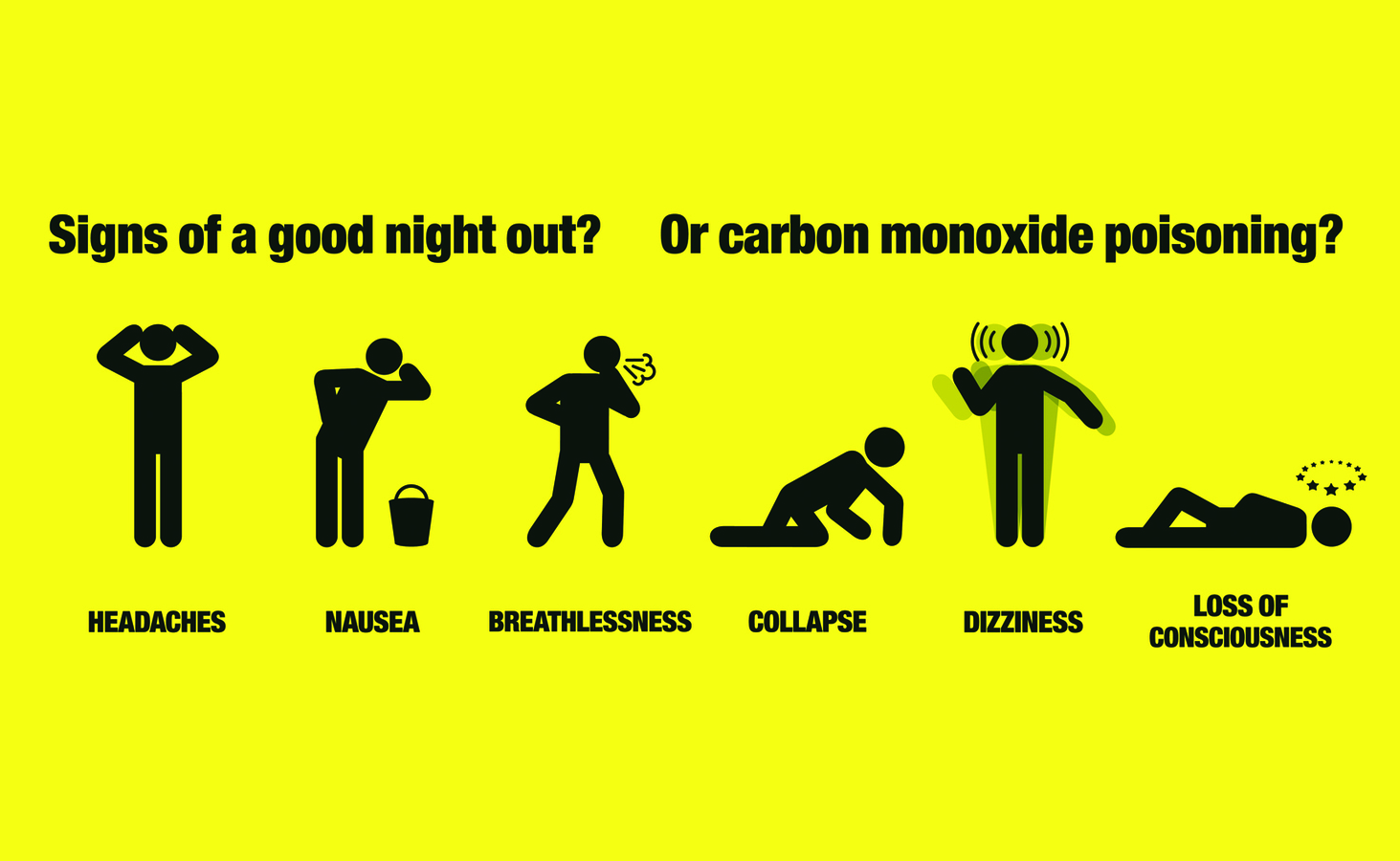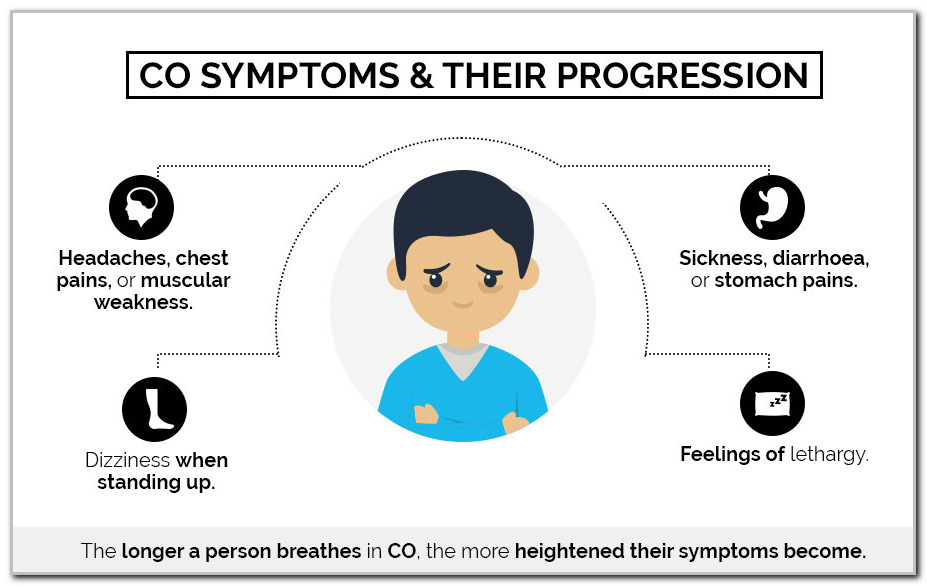

If you are exposed to very low levels of carbon monoxide over a longer period (weeks or months), your symptoms can appear like the flu, with headache, fatigue, malaise (a general sick feeling) and sometimes nausea and vomiting. Death can result from only a few minutes of exposure to higher concentrations or from an hour of exposure to lower levels. Without immediate treatment, you can lose consciousness, have a seizure, enter a coma, and potentially die. Unusually emotional behavior or extreme swings in emotions.If you are exposed to very high levels of carbon monoxide gas in a poorly ventilated room, you can develop: Symptoms vary depending on the concentration of carbon monoxide in the environment, the length of time you are exposed, and your health. Carbon monoxide also can act directly as a poison, interfering with cells' internal chemical reactions. Without enough oxygen, individual cells suffocate and die, especially in vital organs such as the brain and heart. As exposure continues, the gas hijacks more and more hemoglobin molecules, and the blood gradually loses its ability to carry enough oxygen to meet your body's needs. Oxygen can't travel on a hemoglobin molecule that already has carbon monoxide attached to it. Once inhaled, carbon monoxide passes from your lungs into your bloodstream, where it attaches to the hemoglobin molecules that normally carry oxygen. More than one-third of carbon monoxide-related deaths occur when the victim is asleep. Carbon monoxide poisoning can occur in victims of smoke inhalation during a fire. The risk of poisoning is especially high when equipment is used in an enclosed place and ventilation is poor. Carbon monoxide poisoning is a potentially fatal illness that occurs when people breathe in carbon monoxide.Īll sorts of sources can release carbon monoxide, including cars, trucks, small gasoline engines (like lawnmowers), stoves, lanterns, furnaces, grills, gas ranges, water heaters and clothes dryers. The manager said hotel rooms were made available to residents while the power was out.Carbon monoxide is a tasteless, colorless, odorless gas found in the fumes of fuels that contain carbon, such as wood, coal and gasoline. They are not required because all of the stoves are electric at the complex. He also said the units do not have carbon monoxide detectors. The manager of the apartment complex told ABC13's Charly Edsitty that the power was out at the complex due to Wednesday's storms. The five others have since been released.
Carbon monoxide poisoning symptoms dead update#
In an update on Friday morning, HFD Chief Sam Peña said only one person remains hospitalized.

ORIGINAL REPORT: 1 dead, 6 hospitalized from carbon monoxide poisoning at NW Houston apartment, HFD says Officials said all seven victims are adults in their 20s and 30s. Meanwhile, a seventh person was pronounced dead at the scene from the fumes, HFD said. Six people had to be taken to the hospital due to apparent carbon monoxide poisoning. Investigates believe the fumes likely spread to other units and made others sick.
Carbon monoxide poisoning symptoms dead generator#
Houston firefighters said they found the power generator inside a unit when they were called to the Vintage Apartments at 6500 West 43rd, which is located along the US-290 Northwest Freeway, around 11 a.m. HOUSTON, Texas (KTRK) - Officials are investigating a deadly case of carbon monoxide poisoning - the result of a power generator operating inside of a northwest Houston apartment. He also said the units do not have detectors. The apartment manager told ABC13 the power was out at the complex due to Wednesday's storms, and that could be why a generator was found inside.


 0 kommentar(er)
0 kommentar(er)
